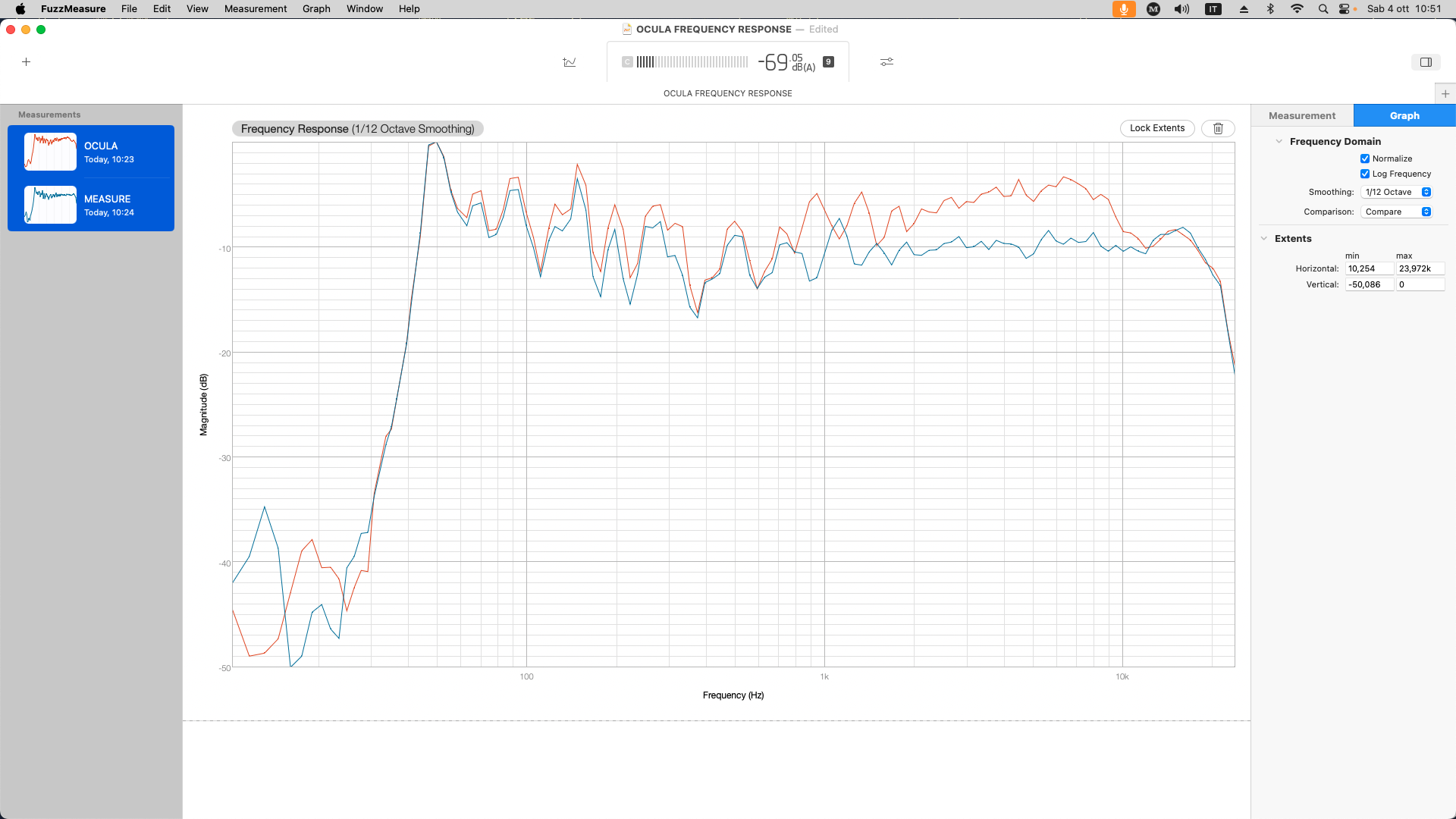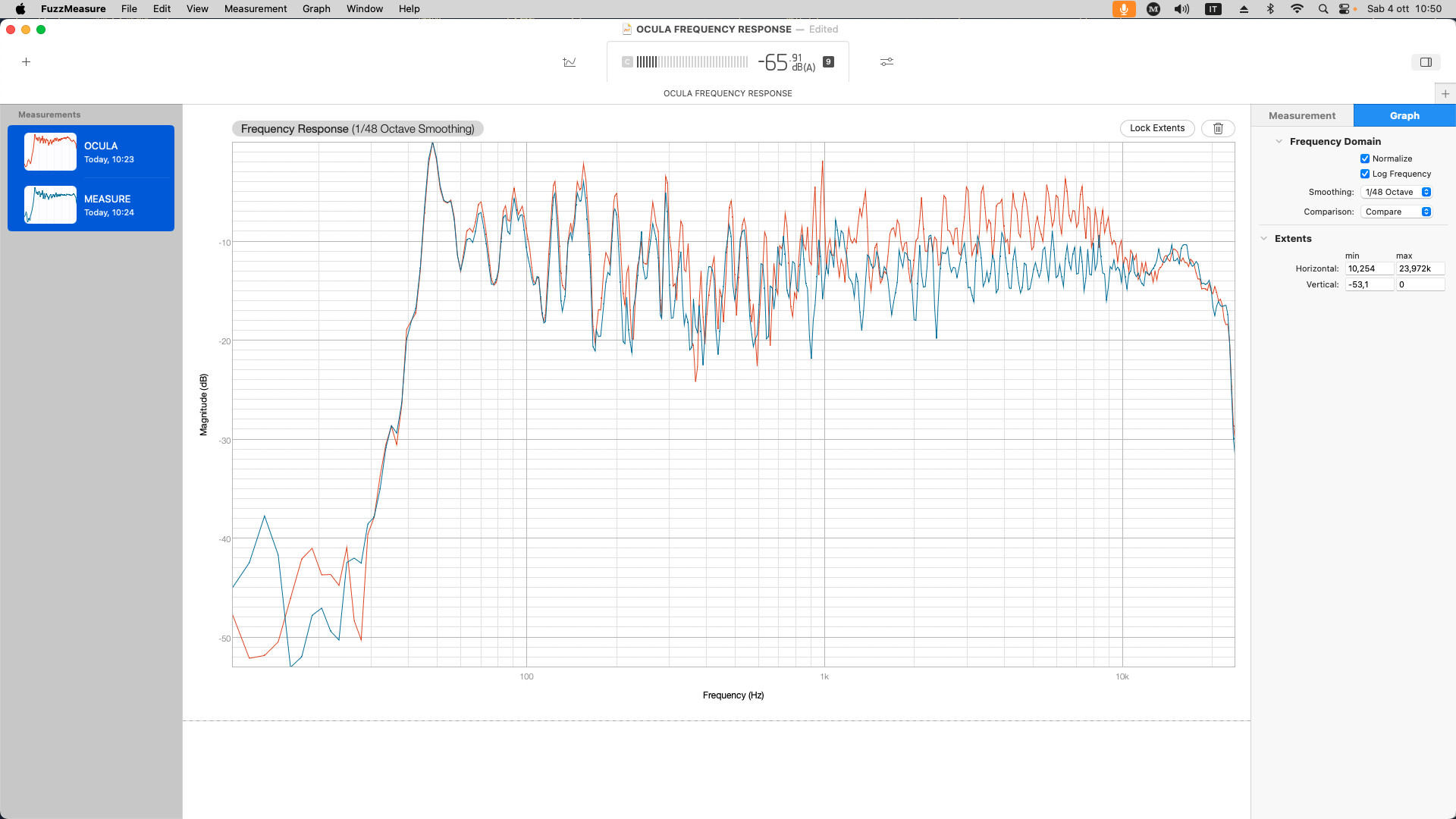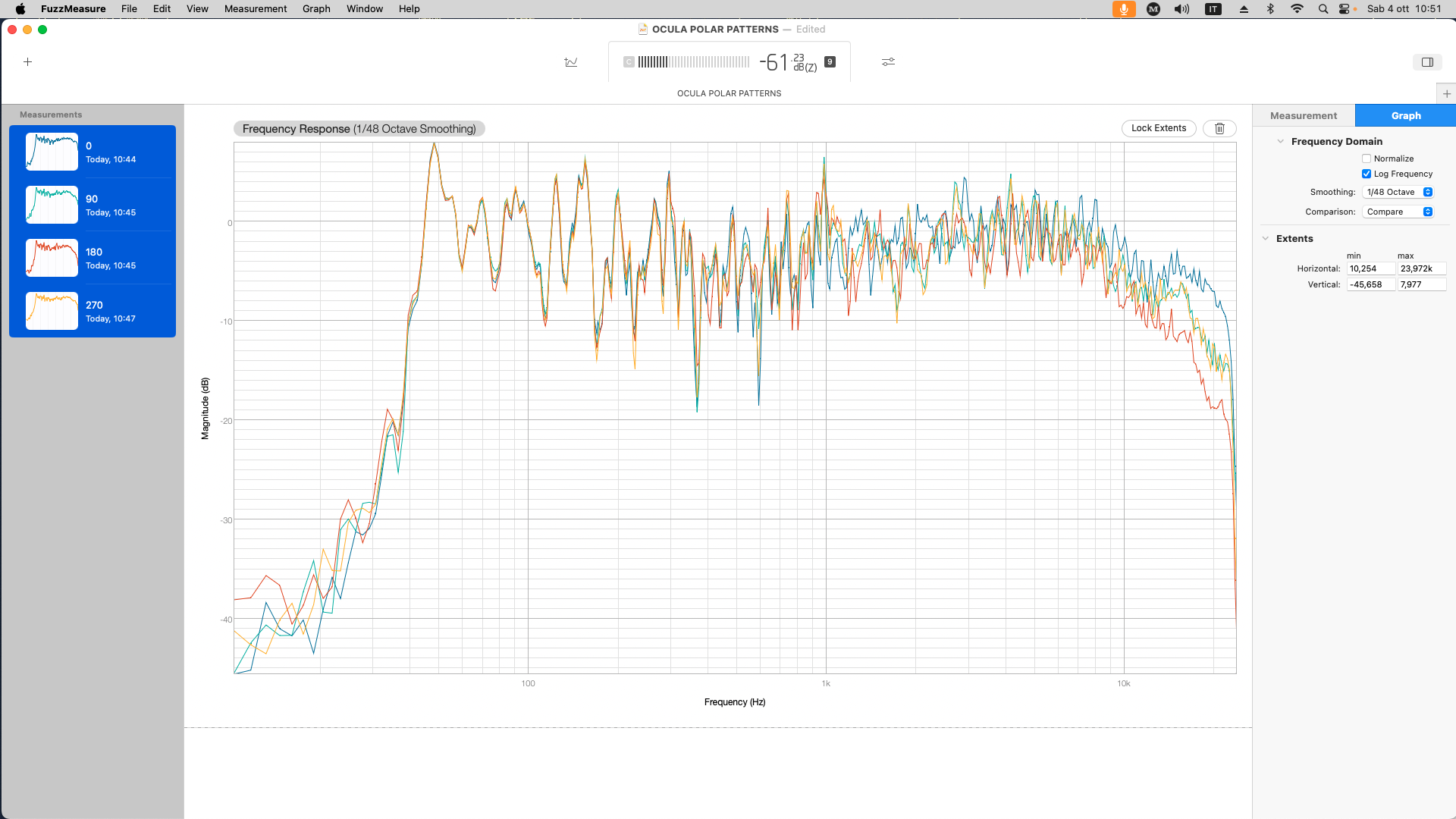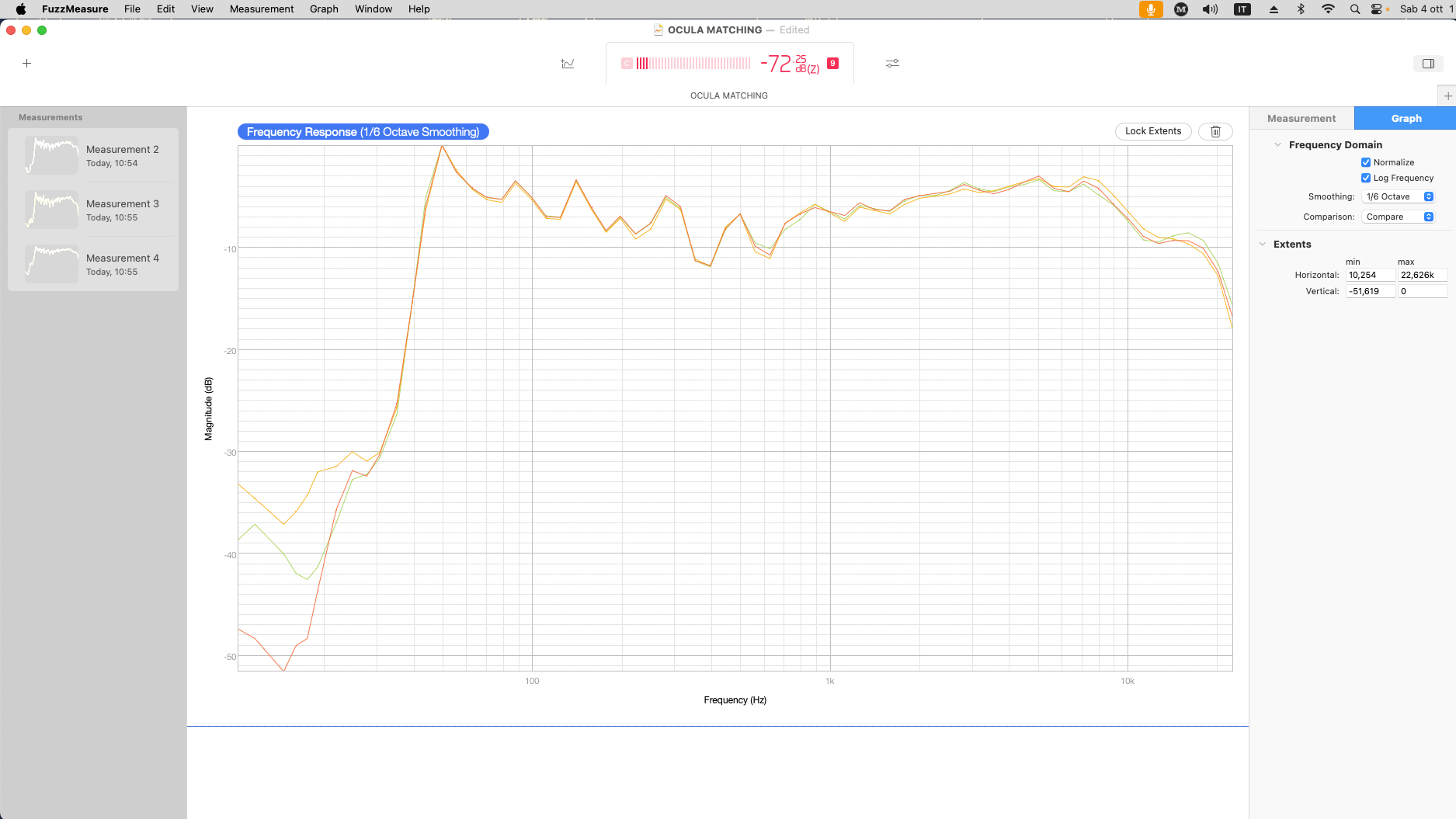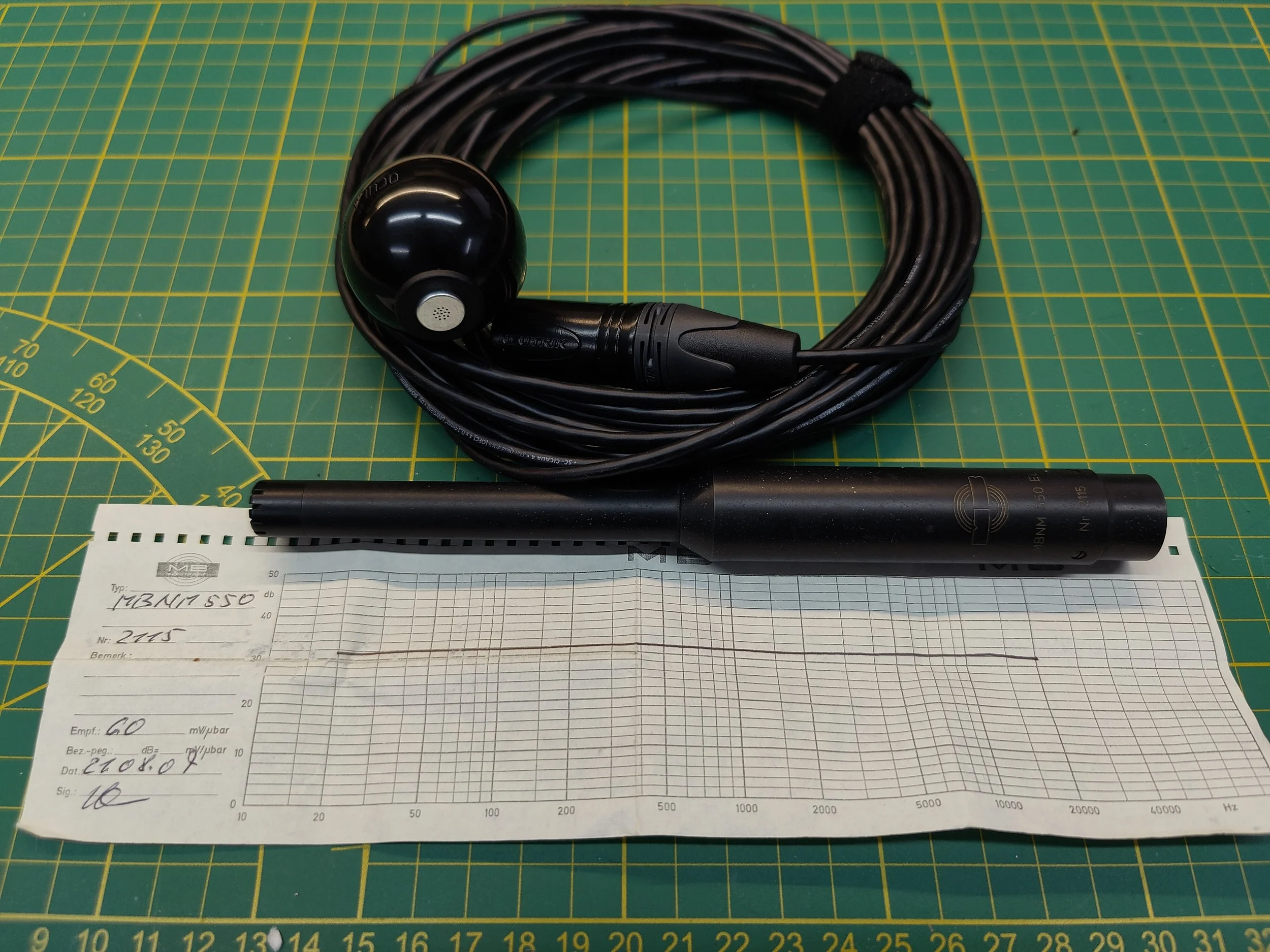OCULA MEASUREMENT SESSIONS
/MEASUREMENT SETUP:
Reference microphone: MBNM 550 measurement microphone
Device under test: Braingasm OCULA
Test Signal : 1 sec. audio frequency sweep from coaxial speaker 50 Hz - 20K Hz
Software: Rode Fuzzmeasure
Preamp: Focusrite ISA 828
FREQUENCY RESPONSE
The measurement microphone frequency response is used to average the room response, becoming the actual flat frequency response to compare, being its absolute response flat from 0 to 20kHz as stated in the provided tech specs sheet (see pictures above).
What happens under 50Hz is not relevant in this environment because the speaker is unable to generate sound down there. Recording an ambience sound reveals that the OCULA, like the MBNM 550 is well sensitive and full down to the spectrum starting point.
Following the 2 frequency response charts with 2 different smoothing (1/48 oct. and 1/24 oct.). It’s very clear what the A.P.E. is doing there, and that the OCULA capsule extends its response towards the spectrum borders like the MBNM 550 do.
POLAR PATTERN ANALYSIS
Instead of the classic polar chart which is pretty hard for me to plot i am presenting the OCULA polar response on 4 axis, which is very informative with respect to the microphone behavior vs. the sound incidence axis, and it’s just another way to graphically plot the polar pattern concept.
The frequency response of the OCULA is plotted 4 times, at 0°, 90° 180° and 270° , showing that the microphone is omnidirectional until it reaches the A.P.E. range of action where its directionality starts to increase towards a cardiod pattern.
MATCHING
Finally i wanted to show how i perform the matching process and how close a matched trio of OCULA can be. Below a frequency response of a matched trio candidate. The +/- 0.5dB broadband tolerance stated in the published tech. specs is accomplished.
Thank you.



